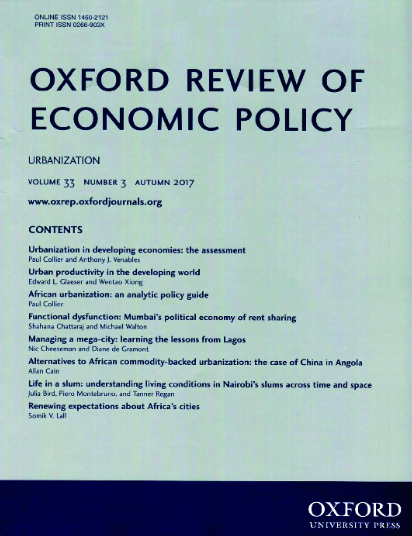涓流重新访问
IF 1.8
2区 经济学
Q2 ECONOMICS
引用次数: 1
摘要
在这篇论文中,我讨论了从最近关于税收发生率或税收政策对福利分配的影响的经验证据中可以学到的“涓滴”思想。我强调三个教训。首先,最近的研究表明,企业所得税会影响工人的收入,但这些影响主要来自对租金和租金分摊征税,这突出了这些渠道对确定最终发生率的重要性。其次,当工人受到这些税收的影响时,负担并不是由所有工人平等承担的,而是主要由收入分配中处于顶端的工人承担的。第三,在法律上影响富人的不同税收政策中,负担在很大程度上由富人承担,但税收激励措施和纳税人反应的异质性为发生率分析提供了背景。在整个过程中,我讨论了分析异质性反应的价值,特别是税收发生率如何取决于劳动力市场、产品市场和税收制度。本文章由计算机程序翻译,如有差异,请以英文原文为准。
Trickle-down revisited
In this paper I discuss what can be learned about ‘trickle-down’ ideas from recent empirical evidence on tax incidence, or the effect of tax policies on the distribution of welfare. I underscore three lessons. First, recent research suggests that business income taxes affect the earnings of workers, but these effects largely derive from taxing rents and rent-sharing, highlighting the importance of these channels for determining the ultimate incidence. Second, when workers are affected by these taxes, the burden is not borne equally by all workers, but predominantly by those at the top of the earnings distribution. Third, across different tax policies that statutorily affect the rich, the burden is largely borne by the rich, but heterogeneity in responses across tax incentives and taxpayers provides context for incidence analyses. Throughout, I discuss the value of analysing heterogeneous responses, particularly how tax incidence depends on labour markets, product markets, and tax systems.
求助全文
通过发布文献求助,成功后即可免费获取论文全文。
去求助
来源期刊

Oxford Review of Economic Policy
ECONOMICS-
CiteScore
12.50
自引率
1.50%
发文量
41
期刊介绍:
The Oxford Review of Economic Policy is a refereed journal which is published quarterly. Each issue concentrates on a current theme in economic policy, with a balance between macro- and microeconomics, and comprises an assessment and a number of articles. It gives a valuable appraisal of economic policies worldwide. While the analysis is challenging and at the forefront of current thinking, articles are presented in non-technical language to make them readily accessible to all readers. The Oxford Review is aimed at a wide audience including government, business and policy-makers, as well as academics and students. It is required reading for those who need to know where research is leading.
 求助内容:
求助内容: 应助结果提醒方式:
应助结果提醒方式:


